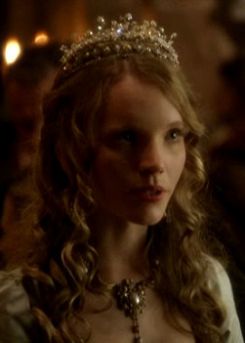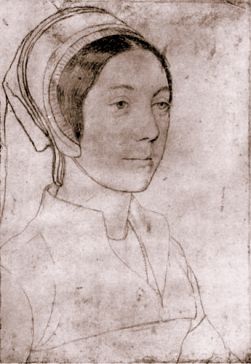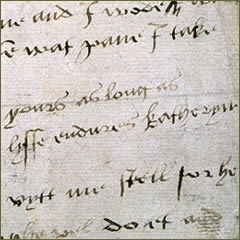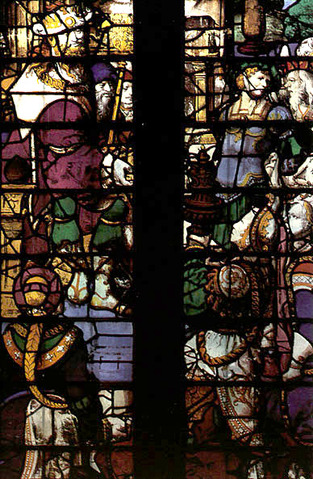Katherine Howard Historical Profile
Jump to navigation
Jump to search
| | Queen Consort for 18 months 28th July 1540 - 13th February 1542 |
INTERESTING FACTS:
See also : Katherine Howard in her own words to see a full transcript of the letter plus her letter to Henry imploring his forgiveness.
| 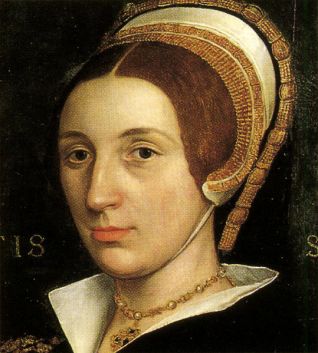 after Hans Holbein "Uknown woman" who has been sometimes identified as Elizabeth Seymour and Princess Mary Tudor but recently in 2008 by David Starkey as Katherine Howard *see article below The Charges against Katherine were read by her Uncle, Thomas Howard, 3rd Duke of Norfolk to her in Hampton Court Palace : "My Lady Catherine Howard. You have been charged with treason. The grounds for this charge is that you entered into marriage with His Royal Highness, King Henry VIII having knowledge of a previous betrothal to both Henry Mannox and Frances Dereham. It is also stated that you employed these persons, here at the Palace, with the full intention of continuing this sordid lifestyle. You have, not only brought shame upon your name, but have grievously sought to destroy His Majesty the King. It will be in your best interest to admit to these crimes and plead for his mercy". Her reply was: "I am innocent of all charges and will never admit to these lies. If there is any ground of truth in these statements, then it is because of childish ignorance and the evil companions with whom I was formally surrounded. I also seek to state, that I am faithful to the King and would never wish harm upon him. I will seek his mercy, but not by admitting to these treacherous lies". Before her marriage Katherine is said to have had at least two lovers, a musician, Henry Mannock, or Mannox and Francis Dereham, to whom she had certainly been secretly betrothed. However she swore the relationship with Mannox was not fully consummated. 'At the flattering and fair persuasions of Mannox being but a young girl I suffered him at sundry times to handle and touch the secret parts of my body which neither became me with honesty to permit nor him to require,' when later interrogated & Mannox admitted the same. Her relationship with Francis Dereham was far more serious and likely consummated. There is much evidence on this point, including her own confession: 'Francis Dereham by many persuasions procured me to his vicious purpose and obtained first to lie upon my bed with his doublet and hose and after within the bed and finally he lay with me naked and used me in such sort as a man doth his wife many and sundry times but how often I know not.' They addressed one another as 'husband' and 'wife' and when Dereham was sent to Ireland on business, he left 100 pds in Katherine's keeping. After becoming queen she occasionally met Dereham who was in her service and began a close relationship with her cousin Thomas Culpepper, and in November 1541 Thomas Cranmer informed Henry that his queen's past life had not been without stain. Cranmer had obtained his knowledge indirectly from John Lascelles, the brother of Mary Hall, herself a chambermaid to the dowager duchess of Norfolk and thus privy to Catherine's past. Lascelles was a 'convinced reformer' & motivated by his religious convictions not personal animosity towards Katherine. But she represented the conservative Catholic faction and, with her influence, they were growing more powerful and reactionary. Lascelles went to Thomas Cranmer who recognized the dangers to Katherine, namely the precontract with Dereham that would invalidate her marriage to Henry VIII. The precontract, of course, while ending her marriage, also excused her intimacy with Dereham. An assortment of female servants were arrested and sent to the Tower, as was Dereham. He was tortured; he confessed his earlier relationship and named Thomas Culpepper as the queen's current lover. Culpepper was then arrested, tortured, and confessed. Katherine was demoted from her position as Queen on 22 November 1541 and formally indicted two days later for leading an 'abominable, base, carnal, voluptuous and vicious life'... On 10 December 1541, Dereham paid a horrific penalty for his 'crimes'; he was hung, drawn, and quartered (disemboweled and castrated while still conscious) as a traitor. And as Starkey says : "All for sleeping a few times with an attractive and willing teenage girl who at the time was not married" Thomas Culpepper was also executed that day, though he suffered a more merciful beheading; this was ordered by the king, perhaps because of Culpepper's higher rank and personal service in his household. Their heads were fixed on spears atop London Bridge and remained there as late as 1546. On Friday, 10 February 1542, Charles Brandon, 1st Duke of Suffolk took Katherine Howard to the Tower of London. She struggled and had to be forced aboard the barge. On Sunday night, she was informed that she would be executed the next day. Her only request was that the block be brought to her for she wished to 'know how to place herself.' It was to be her last act on a grand stage; she would die with all the dignity and composure possible. About 7 am on Monday, 13 February 1542, Katherine, weak and frightened was helped up the steps to the scaffold. She made a small, quiet speech regarding her 'worthy and just punishment'; she prayed for the king's preservation and for God's forgiveness. Her body was interred at the nearby chapel of St Peter ad Vincula close to her Cousin and Henry's 2nd wife Anne Boleyn.
| ||||
LINKS:
LITERATURE: Non-Fiction
Fiction:
| |||||
| <embed height="278" src="http://widget.wetpaintserv.us/wiki/thetudorswiki/widget/youtubevideo/27075467928dcc097f186882ac84e64ecad3f1f7" type="application/x-shockwave-flash" width="344" wmode="transparent"/> | <embed height="278" src="http://widget.wetpaintserv.us/wiki/thetudorswiki/widget/youtubevideo/c87bfbc514c0e62d3f7e3ccda495b34f52af8354" type="application/x-shockwave-flash" width="344" wmode="transparent"/> |
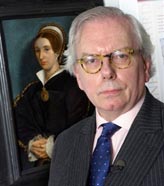 As reported on the <a class="external" href="http://www.hevercastle.co.uk/WhatsNew/tabid/107/View/true/ParentId/3/Default.aspx" rel="nofollow" target="_blank" title="Hever Castle website">Hever Castle website</a>: As reported on the <a class="external" href="http://www.hevercastle.co.uk/WhatsNew/tabid/107/View/true/ParentId/3/Default.aspx" rel="nofollow" target="_blank" title="Hever Castle website">Hever Castle website</a>:Controversial Catherine Howard portrait unveiled by Starkey at Hever Castle The rare and newly acquired portait of Catherine Howard was unveiled by David Starkey on 3rd March 2008 completing Hever Castle's collection of Henry VIII's Queens. Catherine Howard (1521-1542), Henry VIII’s fifth wife, married the King in 1540 almost immediately after his divorce from Anne of Cleves was finalised. However, after humiliating the King with her infidelity, Catherine was charged with treason and executed on 13th February 1542 The portrait has been surrounded in controversy as it has proved hard to identify, with previous debate naming the sitter as Mary Tudor or Elizabeth Seymour. This arose because not only was Catherine Howard’s marriage to Henry, and time at Court short lived, making the window for portrait sitting small, but she was, as the daughter of a younger brother of a Duke, one of the many obscure and relatively poor aristocracy of whom family portraits in youth may well have been unlikely Now, it is agreed that the portrait is indeed Catherine Howard, firstly because of the clothes and jewellery – Henry VIII is known to have inundated Catherine with such gifts in his attempts to please her – and secondly because it bears a striking similarity in face shape and features to that of a miniature in the Royal Collection. The portrait of Catherine Howard will sit next to a portrait of Anne Boleyn and her lesser known sister Mary, as part of the ‘Losing your head over Henry’ Exhibition in Hever Castle’s Long Gallery. The exhibition explores the relationship between the Boleyn and Howard families, both fiercely ambitious for their daughters to become Queen of England and both eventually disgraced, as Anne and Catherine were beheaded. ...Hever Castle is best known as the family home of Anne Boleyn, but is also where it is believed Henry VIII first met and then courted Anne and now boasts one of the best collections of Tudor portraits after the National Portrait Gallery. |
